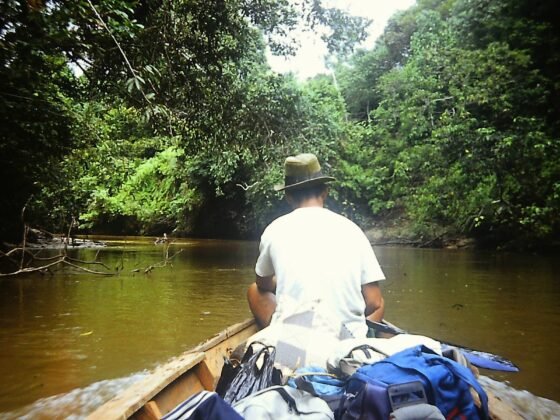Masculine activity that off-roading is, it can often feel as if all you need to do is to buy the biggest 4 x 4 out there, and use brute force to tear your way through whatever terrain you find. Reality tends to be slightly different, though. Not only does it involve the use of skill and knowledge in addition to brute force, you often need to stop and think. While it may not be the image that off-roader commercials like to put out there, it’s one of the best learning approaches possible.
Whether you drive a powerful Ram 1500 or Dodge Durango with a premium Mopar performance crate engine, thinking will get you farther. Each time you come upon challenging terrain, you need to think of what you’re asking your truck to do for you, imagine how it feels, and picture in your mind how the tires will work with it. It can go great way to drive safely and intelligently.
When the terrain is squishy mud
Maintaining traction at all times is the fundamental skill that every off-road enthusiast needs to develop. Understanding how to find traction is of utmost importance when you are faced with muddy terrain. You need to assess the situation to see if you can find out how deep the mud runs. If it’s any deeper than a few inches, you need to find a different path, if possible. If you have no choice, you need to back up, and go in with slow and steady momentum. The idea should be to minimize the possibility of having your wheels spin. Your movements should be gradual, slow and studied. Jerky movements usually result in loss of grip.
Grassy terrain
Grass can appear to be one of the safest surfaces possible to drive on. In reality, though, tall grass can be a challenge, because it can hide serious dangers such as tree stumps, holes and sharp rocks. Grass can also be as slippery as ice when wet. Here, too, you need to keep the vehicle moving at a steady pace, with no sudden moves. It’s important to not drive on grass for extended periods of time. Pollen, seeds and other grass-related gunk can clog up air intakes.
Hilly terrain
People starting out at off-roading tend to believe that the way to negotiate a hill is to take it diagonally to minimize strain on the engine. While it certainly is true that the diagonal style would be present a smaller load to the engine, it would be highly unsafe. It can be extremely difficult to turn without toppling over. Hills should be taken straight-on at a low gear ratio.
Descending should be the same. You don’t want to coast in neutral or build up speed. Instead, you want to use engine braking in first gear, and use the brakes every now and then.
Maintaining control over snow and ice
Most off-roading tires are able to handle mud, grass and hilly terrain. Ice is a completely different matter, though. To begin, extremely cold temperatures usually result in tire-hardening that can result in poor grip. It’s important to go with soft rubber and strong sidewalls. You’ll need to air down (partially deflate) your tires for a larger footprint and improved grip.
Getting started and pulling away can often be a challenge. A low gear with differential locks engaged should help you. Once you manage to get going, you need to keep up momentum. If you are driving in rutted snow or ice, it’s generally a good idea to not follow the ruts. Not only is it bad for the road, it could stress the suspension and tires.
Cindy Ward is a tomboy at heart who loves roughing it in the great outdoors! In her free time she shares her knowledge of camping, off-roading and more on a variety of travel related sites online.












